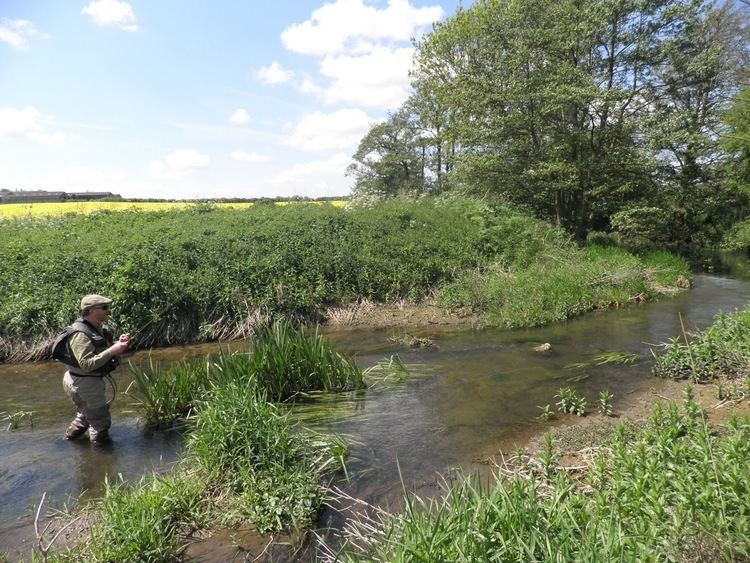Country United Kingdom | ||
 | ||
The River Gwash, a tributary of the River Welland, flows through the English counties of Leicestershire, Rutland and Lincolnshire. It rises just outside the village of Knossington in Leicestershire, near the western edge of Rutland. It is about 20 miles (32 km) long.
Contents
Map of River Gwash, United Kingdom
Course
The source in Knossington is at SK798084, but the Gwash is formed of several small headwaters that come together near Braunston-in-Rutland before passing the site of Brooke Priory at SK847062 and running westward to pass under the railway Northwest of Manton (SK876052).
The Gwash then helps to fill the Rutland Water reservoir which was formed by damming its valley at Empingham. From the reservoir a controlled flow is released to maintain the flow around Tolethorpe Hall and Stamford and into the River Welland. The flow is enhanced by the Gwash's tributary, the North Brook, at SK956083 in Empingham, which significantly helps maintain riverlife.
East of Stamford, its course is now fixed but it lies in a small flood plain which shows clear signs of the river's former meandering. The pasture fields include depressions which fill in wet seasons forming oxbow lakes, though they are not of the classical shape. Near Stamford it is the parish boundary between Stamford and Uffington.
West of Stamford, the Gwash crossed the Stamford Canal, requiring some elaborate hydraulic works. Although the canal has been dry for over a century, the Borderville weir has only just been removed, and some meanders re-watered.
The river feeds the millpond at Newstead before entering the Welland at Newstead Bridge at TF048073.
Wild life
The river supports a wild variety of fish species, including grayling and trout. Chub and dace inhabit the lower length below Newstead bridge in Stamford.
There are attempts to re-introduce water voles in the area.
There are concerns about non-native signal crayfish becoming dominant in the river, and reports of a deliberate introduction. The river has formed part of pilot control trials.
Etymology
The name appears to be derived from the Old English (ge)waesc 'a washing, a flood'. The earliest form was "le Whasse" (c1230); the use of an initial G- is first recorded in 1586 and the spelling 'Gwash' appears to be a quasi-Welsh spelling.
